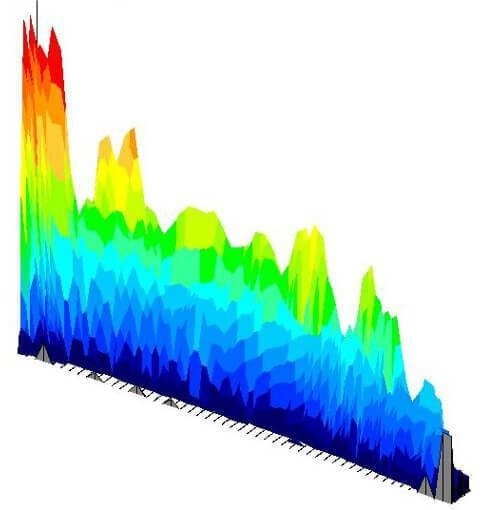Wind, noise, and water leaks in a new vehicle can be significant sources of customer dissatisfaction. They can create a perception of poor quality, and cause warranty expenses
Therefore, the accurate adjustment of hinges and door latches while the car is still in the factory, and the doors are still being mounted, is very important. Adequate adjustment can eliminate the possibility of further problems.

Challenge
One of the main challenges has been the inability to have precise information about where the position of the hinges and latches should be. To measure door seal pressure, technicians would slide a piece of paper between the body and the weather strip to gauge the amount of pull in different locations.
Solution
The I-Scan™ pressure mapping system provides an electronic "feeler" gauge that assembly technicians can use to measure the contact pressure. The gauge mechanism can also provide direct feedback, which can aid in optimizing the seal pressure and deflection around the door frame.
The I-Scan system is an intuitive, visual feedback tool that easily measures and displays door seal pressures. It provides direct view of the door seal force changes that technicians use to adjust the door latches and hinges as the door is mounted. It is important to have a tight door seal because it reduces the air leaks and wind noise in the passenger compartment and helps to eliminate water leaks.

Figure 1. Door seal pressure output before adjustments

Figure 2. Door seal pressure output after adjustments
The same amount of force is applied to two different seal designs in both of the studies presented. I-Scan with 6300 sensors shows a 3D pressure display, which indicates problems, shown in Figure 1. The valley in the middle indicates a weak spot in this seal, which represents a leakage path for air or water. By contrast, Figure 2 shows a lower peak pressure, but a more even pressure distribution, which makes it the more effective seal design.
Door Seal Pressure Measurement Applications
- Locate:
- Gaps in seals
- Low or high pressure regions
- Weak seals
- Adjust door hinge and latch
- Competitive benchmarking
- Measure door closure forces
- Validation testing
- Reduce high pressures near weld beads
- Increase low pressures at spot-weld dimples
Benefits of Using I-Scan
- Help reduce window noise
- Improve quality
- Eliminate water leaks
See how Pressure Mapping Technology can help validate a tight seal on a product or device:
Pressure Mapping in R&D - Evaluating Component Press Fits & Seals

This information has been sourced, reviewed and adapted from materials provided by Tekscan, Inc.
For more information on this source, please visit Tekscan, Inc.